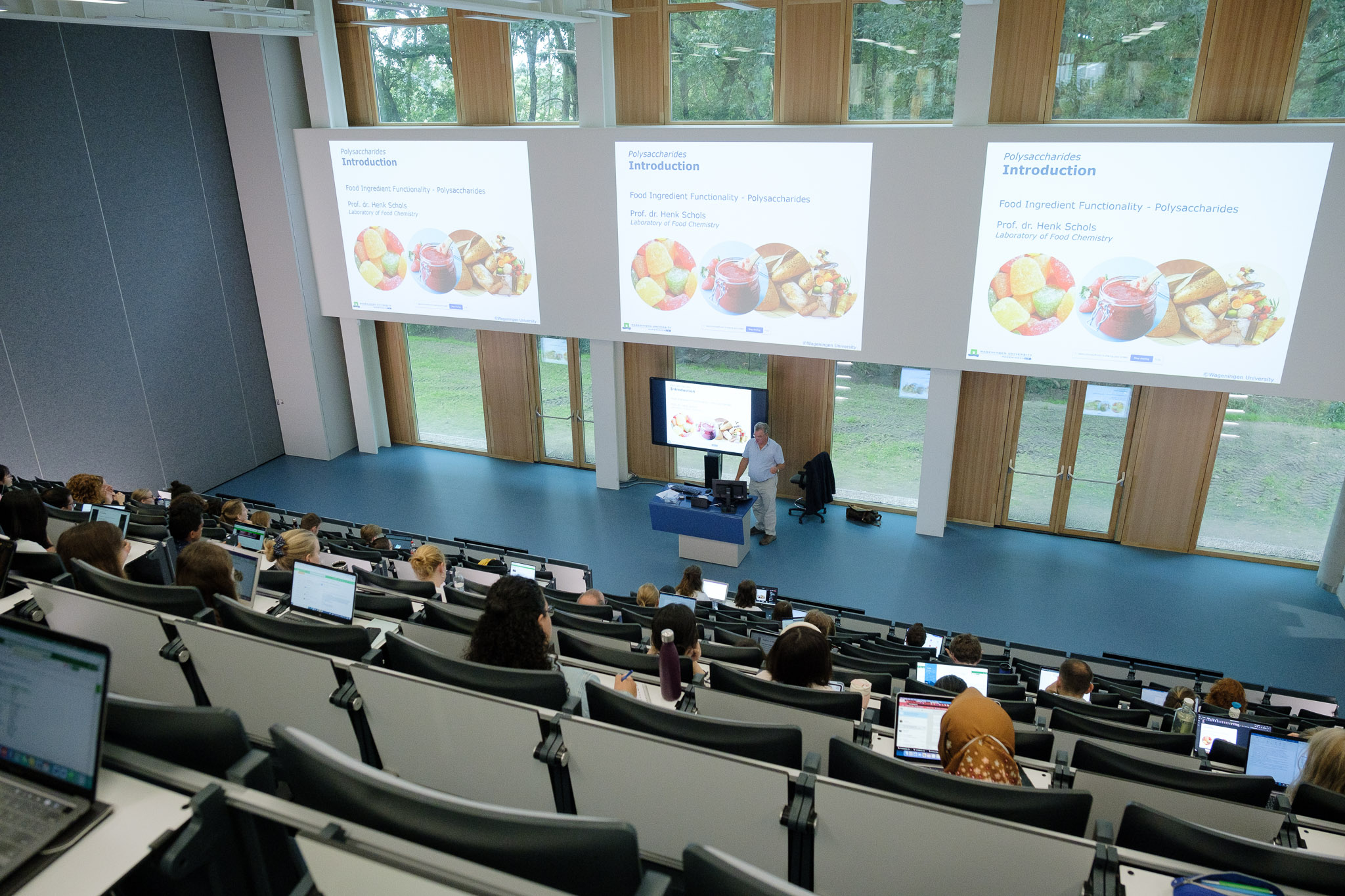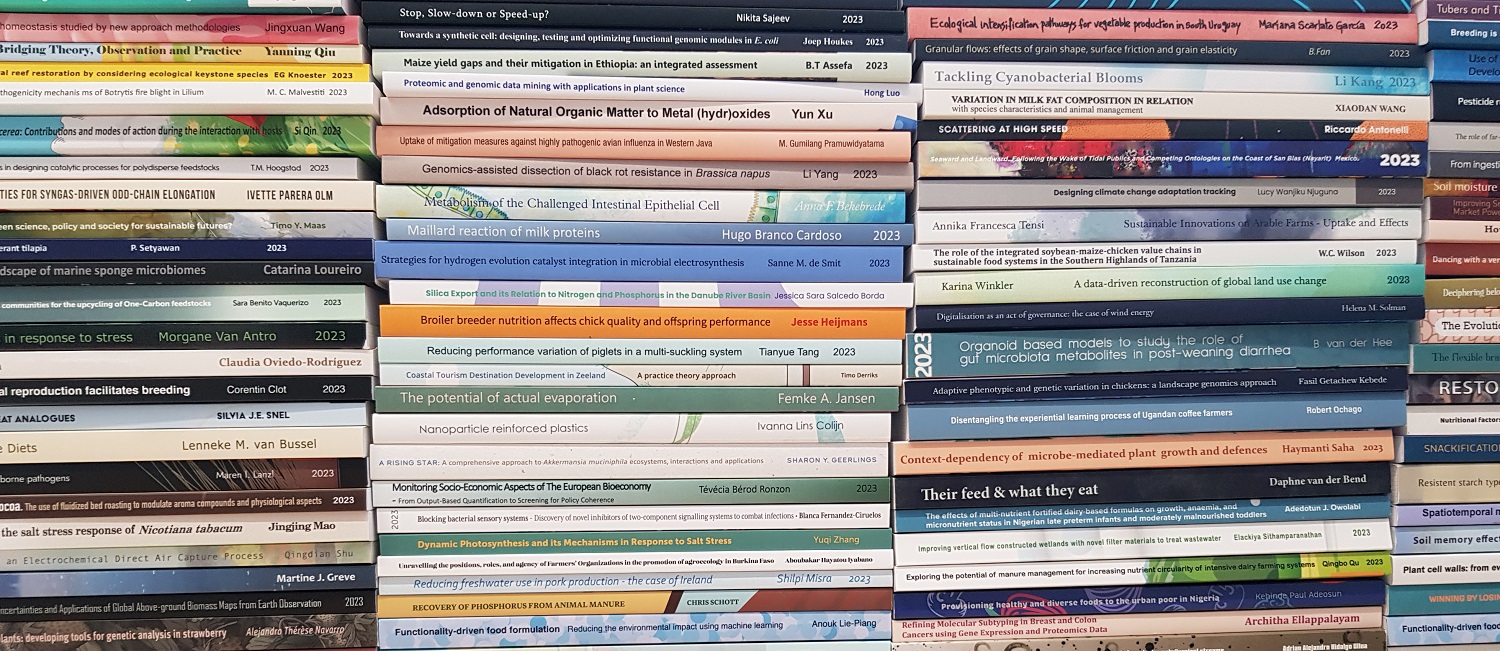Most of Wageningen University’s education is happening on campus again. ‘Interaction again at last.’ But some online course components were so popular that they are staying online.
Jetske ten Caat, a member of the WUR taskforce that coordinates the organization of education in Covid times, reckons that about 80 per cent of the education is now face-to-face on campus, while 20 percent is still online in period 1. ‘Those are large-group courses, for instance, that can only be taken by 75 students on campus, which means the rest take the course online. And sometimes components of courses are online, such as an explanation in the form of a ‘knowledge clip’ or a preparatory class with the possibility to chat. These forms were such a success during the Covid period that the programme has kept them.’
But broadly speaking, nearly everyone is happy with the teaching on campus: at least there is real interaction among students again, and between students and teachers. ‘We think it’s very important for students to come back to the campus, but a combination of on-campus and online teaching is fine too, as long as educational quality comes first,’ says Ten Caat.
Preparation
The trickiest issue for the taskforce over the summer was the uncertainty about which Covid measures would apply in the coming academic year. Rector Arthur Mol made an important decision about that back in early May. WUR assumed that social distancing would no longer be enforced in the education buildings in September, and that a maximum of 75 students would be allowed in a lecture room. With that scenario, teachers and schedulers could start making preparations.
Officially, the teachers had to figure out a fallback option for a scenario in which there are stricter Covid measures and a lot of online classes, but the requirements for that Plan B were minimal. ‘The government only decided on 13 August that campuses could open again,’ says Ten Caat. ‘We couldn’t wait until then. At the beginning of May we decided to aim for campus education with a fallback scenario, so that the teachers and support staff could prepare for the new academic year in good time, and everyone could get a real break in the summer holiday.’
Not all teachers were eager for campus education because they don’t all feel safe among large groups of students not wearing face masks. In such cases, the taskforce sought a solution in consultation with the programme director and the teacher. Sometimes they decided the teacher concerned would teach the course or component online, and sometimes a colleague from the chair group could do the teaching on campus.
Permanently online
Many practicals were already being run on campus during last academic year, but thanks to the scrapping of social distancing rules, they can now be run old-style again. But there are exceptions even for practicals. The BSc in Business and Consumer Sciences always ran computer practicals in computer rooms, with teachers walking around and looking over students’ shoulders at their screens when they had questions. Last year, when everyone was working at home on their own laptops, this practical was run on Teams, says programme director Paul Berentsen, which meant students could put their hands up virtually and the teacher could take over their screens. ‘That worked so well, we’re going to carry on doing it that way,’ says the teacher.
For the MSc in Development Studies, too, the rule is: we teach on campus as much as possible, but if a course (or a course component) works better online, we do that. An example of that was the course Perspectives and Themes in International Development Studies, which is taken by Master’s students with varying levels of knowledge. The course lectures, which are attended by more than 75 students, are taught partly on campus and partly online. ‘The groupwork and the tutorials are on campus, but the knowledge clips that support the students’ level of knowledge and group discussions are online. That way you can cater very specifically for students with a variety of academic backgrounds,’ says programme director Marleen van Maanen-Nooij.
75
Even the Statistics course, which was run entirely online last academic year, is back on campus this year. Coordinator Evert-Jan Bakker has 450 students, while only 75 are allowed in a lecture room. How is he dealing with that? On Monday and Wednesday mornings, 75 students are taught in the lecture room, with another room next-door where another 75 can watch in via a livestream. This regime is repeated on Monday and Wednesday afternoons. That way, 300 students can take the course on campus. The rest can take it online.
The only disadvantage of this approach, according to Bakker, is that at each lecture, only 75 students can ask questions directly. But his class is a lecture, which leaves little time for interaction anyway. The students can ask questions during the practical which takes place on campus the day after the lecture in groups of over 20 students. An online practical is also provided for students who have tested positive. Although his lecture could easily be given online, Bakker is glad to be back on campus. ‘In that kind of online lecture, you are talking to yourself and there is no interaction with students. Fortunately, that is back again.’
This academic year there are a total of about 75 courses with more than 75 students, says Fred Jonker, who takes care of the teaching timetable. But that doesn’t always mean that some of the students have to take these courses online. Sometimes teachers offer the course twice on the campus, so everyone can take the course in-person. And many big courses work with smaller seminar groups which can take place on campus, says Jonker.

 Photo Guy Ackermans
Photo Guy Ackermans 

